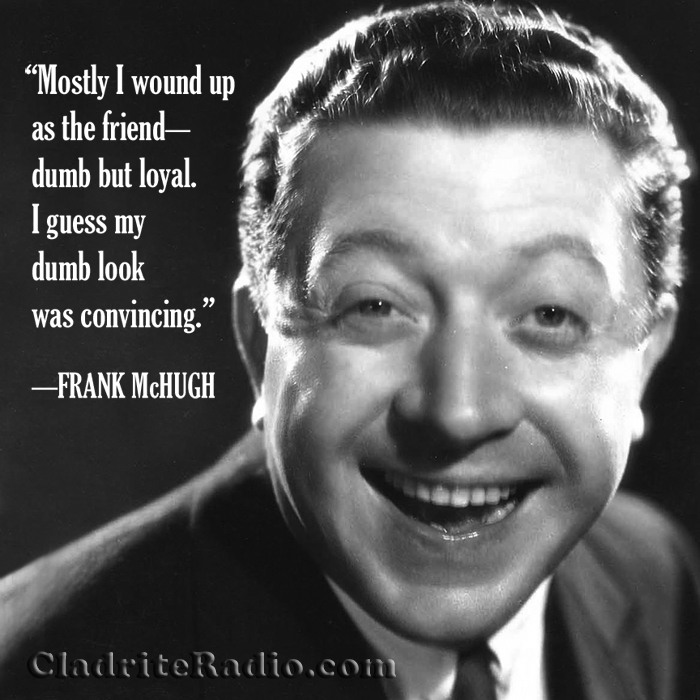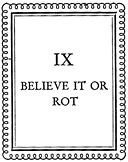Comic relief and sidekick extraordinaire Frank McHugh was born 118 years ago today in Homestead, Pennsylvania. If you’re not sure you recall McHugh’s name, you’ll surely recognize his face if you’ve seen even a few movies from the 1930s and ’40s.
Here are our ten Frank McHugh trivia tidbits:
- Frank McHugh’s parents ran a stock company, and as a child, he occasionally appeared in their productions. He also toured in vaudeville before making his Broadway debut in The Fall Guy in 1925, a play cowritten by George Abbott and character actor James Gleason.
- McHugh, who signed with First National/Warner Brothers as a contract player in 1930, appeared in more than 90 pictures over the next twelve years.
- Frank McHugh made 11 pictures with his pal James Cagney (they were both, along with Pat O’Brien and others, a part of Hollywood’s Irish Mafia).
- McHugh also appeared in 12 pictures with fellow character actor Allen Jenkins.
- Frank McHugh twice reprised in a remake a character he’d already played in the original version of that film: in One Way Passage (1932) and ‘Til We Meet Again (1940), he played a thief eluding Chinese authorities, and in both The Crowd Roars (1932) and Indianapolis Speedway (1939), he played a character named Spud Connors.
- Two of McHugh’s siblings, Matt McHugh and Kitty McHugh, were also film actors. Matt had appearances in more than 220 movies, shorts and TV series to his credit, and Kitty compiled 60 appearances in film and on television.
- Frank McHugh was an eager participant in USO tours during World War II and he was also a member of the Hollywood Victory Caravan, a troupe of 21 stars that traveled the US by train for three weeks, performing along the way to raise money for the Army and Navy Relief Fund.
- McHugh’s USO efforts earned him a citation from the army “for exceptionally meritorious service while working as a member of an entertainment unit” that was signed by Major General Raymond S. McLain.
- Frank McHugh starred in his own radio program, Hotel for Pets, from 1954-56. Some oldtime radio references list the progam as a soap opera, but that somehow seems unlikely to us.
- McHugh and his wife, Dorothy, were married from 1933 until his death in 1981. They had three children together and two grandchildren.
Happy birthday, Mr. McHugh, wherever you may be!








